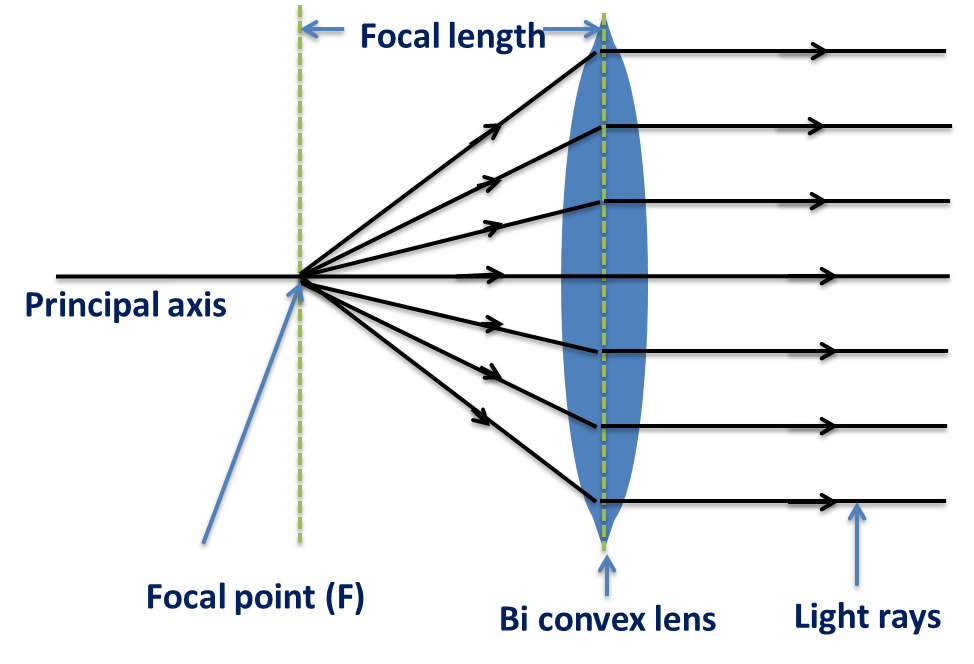Biconvex Lens - Properties, Formula, Uses, FAQs
The biconvex lens is one of the lenses which is made up of two different convex surfaces that form a spherical shape. This lens has some radius of curvature. The other term that represents the biconvex Lens is the convex-convex lens. In this article, let us see about the biconvex lens, biconvex mirrors, double convex lens, and the difference between the biconcave lens and a biconvex lens. This kind of biconvex lens is very simple but is used in various fields and contains a lot of applications. For example, the biconvex lens has more applications in the field of laser beams, optical instruments, quality imaging and so on.
JEE Main/NEET 2027: Physics Important Formulas for Class 10
NEET 2025: Mock Test Series | Syllabus | High Scoring Topics | PYQs
JEE Main: Study Materials | High Scoring Topics | Preparation Guide
JEE Main: Syllabus | Sample Papers | Mock Tests | PYQs
This Story also Contains
- What are the Terms Used in the Biconvex Lens?
- The Usage of Biconvex Lens in the Human Eye
- Properties of Biconvex lens
- The Formula for Biconvex Lens
- Making of the Biconvex Lens in the Home
- Uses and Applications of the Biconvex Lens
What are the Terms Used in the Biconvex Lens?
Focus:
In the biconvex lens, a collimated light beam or a light beam which is accurately parallel to each other is allowed to pass through the biconvex lens and the light beams converge at a particular spot. This spot can be defined as the focus.
Optical Centre:
The centre of the lens is known as the optical centre.
Focal length:
The length or distance between the centre of the lens and the focus can be called the focal length.
Principal axis:
The axis or the line that cuts the convex lens horizontally and passes through the optical center of the lens, is called the principal axis.
The Usage of Biconvex Lens in the Human Eye
The best example of the biconvex lens is the eyes lens used for the rectification of human eye defects. In the working mechanism of the human eye, when the light rays which come from an object or target enter the eye, bend sharp and fall on the focus of the retina. The light beam which is coming from a large distance needs only less refraction. For the higher convex lens, the refraction is greater.
Properties of Biconvex lens
Some basic properties of the biconvex lens are listed below:
- The focal length of the biconvex lens is found to be on the positive axis
- The focal length of the biconvex lens is found to be much shorter than the concave lens
- The incident light converges in the biconvex lens.
- The output images are found to be both real and virtual images, it depends on the length of the object from the lens.
- To minimize the spherical aberration, coma and distortion, the biconvex lens is used in practice.
- The biconvex lens is symmetrical as it is made up of two exact convex lenses with the same radii of curvature and they have an equal radius on both sides.
- The positive conjugate ratio ranges from 0.2 to 5.

Also read -
- NCERT Solutions for Class 12 Physics Chapter 9 Ray Optics and Optical Instruments
- NCERT Exemplar Class 12 Physics Solutions Chapter 9 Ray Optics and Optical Instruments
- NCERT notes Class 12 Physics Chapter 9 Ray Optics and Optical Instruments
The Formula for Biconvex Lens
We know the formula for focal length is
Where f represents the focal length of the biconvex lens
u represents the object distance from the biconvex lens
v represents the image distance from the biconvex lens
The refraction of the spherical surface formula is given as
Where 1 and 2 are the refractive indexes of the medium
R1 and R2 are the radii of curvature of lens 1 and lens 2
Making of the Biconvex Lens in the Home
- Take and cut the cardboard with a diameter of 2.5 centimetres.
- Place the cardboard on the water bottle and make its shape. Now cut the two different circles from the water bottle of the same radius of cardboard by using the scissors.
- Paste the two circles such that the centre of the lens is not stuck together.
- Now, this circle looks like a partial biconvex lens.
Uses and Applications of the Biconvex Lens
- These lenses are used as condensing or magnifying lens
- Objectives or magnifiers are made up of the biconvex lens
- Imaging systems like microscopes, telescopes, monoculars, binoculars, cameras and so on utilize the biconvex lens in their manufactures.
- The biconvex lens is used in the burning glass.
- The biconvex lens also plays an important role in image relays and is used in different optical industries.
- The biconvex lens is used to produce the virtual image which is used to clear the defects in the human eye and real image in some photographic films and is also used in optical sensors.
In this article, we saw a detailed explanation of the biconvex lens, its working and its uses. Let us discuss some frequently asked questions asked in class 10, class 11 and class 12 related to the biconvex lens.
Also, check-
Frequently Asked Questions (FAQs)


